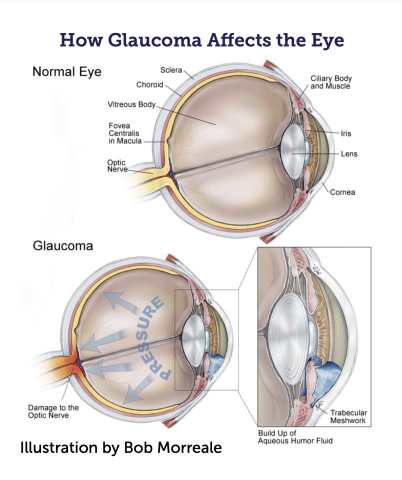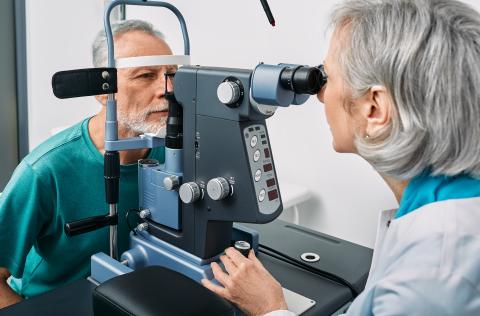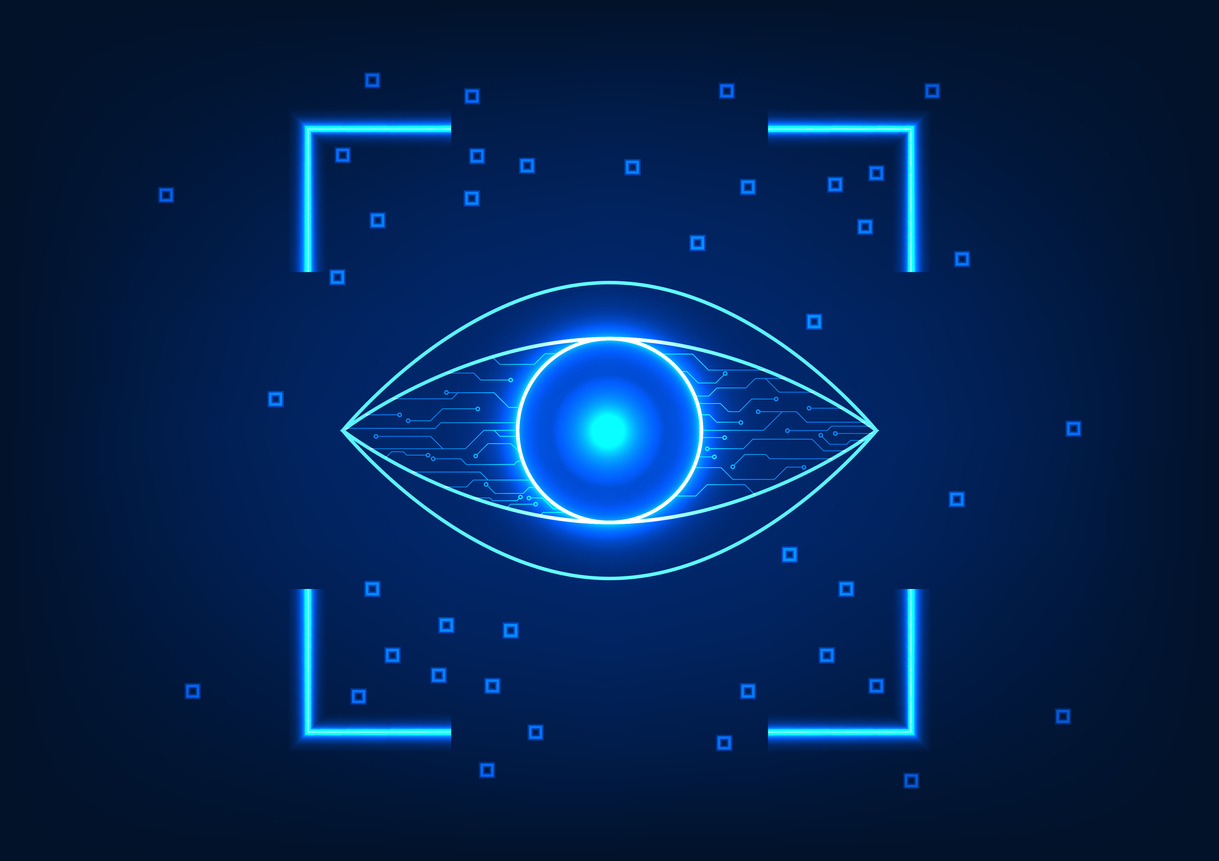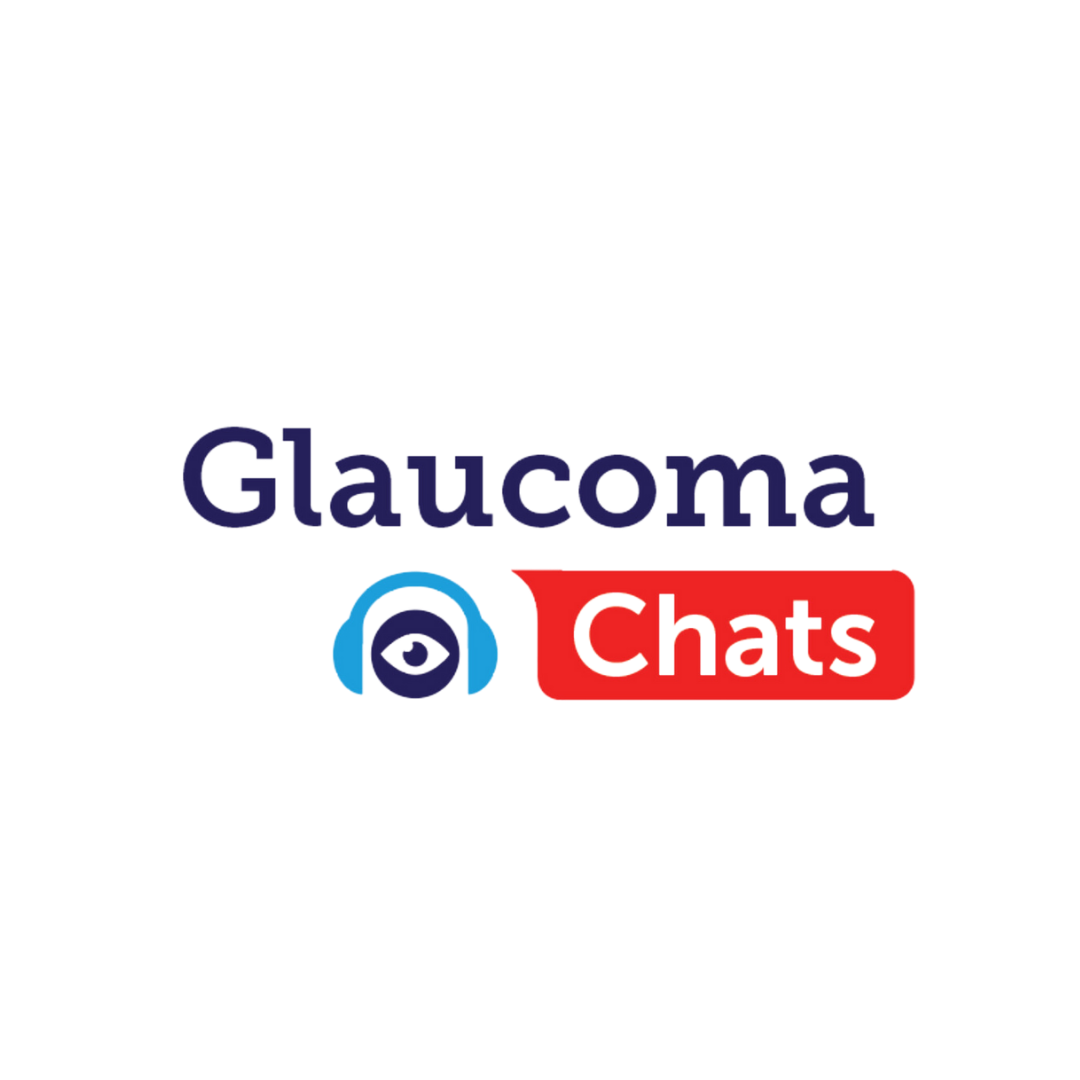What is Glaucoma?
 Glaucoma is not just one disease, but a group of eye diseases that damage the optic nerve—a bundle of nerve fibers that carries information from the eye to the brain. In the U.S., where an estimated 3 million people have the disease, as many as half of them may not even know it.
Glaucoma is not just one disease, but a group of eye diseases that damage the optic nerve—a bundle of nerve fibers that carries information from the eye to the brain. In the U.S., where an estimated 3 million people have the disease, as many as half of them may not even know it.
The most common types often have no symptoms until irreversible damage to the eye has already occurred and vision loss has begun. That’s why glaucoma is sometimes called the “sneak thief of sight,” and why regular screening and early detection are so important. Eye pressure is a major risk factor for glaucoma. However, not everyone with increased eye pressure will develop glaucoma, and conversely, glaucoma can develop without increased eye pressure.

Intraocular pressure, the fluid pressure inside the eye, is maintained at normal levels when some of the circulating aqueous humor (fluid produced by the eye) can leave the eye through its built-in drainage pathway. Then the aqueous humor flows out through a spongy tissue at the front of the eye (the trabecular meshwork) into a drainage canal.
In the more common forms of glaucoma, fluid cannot flow effectively through the trabecular meshwork, causing an increase in intraocular pressure. This increase in pressure is associated with damage to the optic nerve, leading to vision loss.
Currently, there is no cure for glaucoma; however, early detection and treatment can slow the progression of the disease. Vision loss due to glaucoma is irreversible and, if left untreated, can lead to blindness.
Types of Glaucoma
 Open-angle glaucoma, the most common form, is a chronic, slowly progressing condition that has few or no symptoms until peripheral (side) vision loss has already begun. In the U.S., this type impacts African Americans and Hispanics at higher rates than other ethnicities.
Open-angle glaucoma, the most common form, is a chronic, slowly progressing condition that has few or no symptoms until peripheral (side) vision loss has already begun. In the U.S., this type impacts African Americans and Hispanics at higher rates than other ethnicities.
Angle-closure glaucoma, the second most common type, is a largely inherited disorder caused by a narrow angle in the passageway where aqueous fluid would normally flow.
Chronic angle-closure glaucoma can progress slowly and damage the eye with no apparent symptoms.
Acute angle-closure glaucoma occurs suddenly when the flow of aqueous humor between the iris and the lens is blocked. This rare medical emergency must be treated immediately or blindness could result in a day or two.
Normal-tension glaucoma is very similar to primary open-angle glaucoma, except that damage to the optic nerve occurs even though eye pressure is not elevated.
Other types of glaucoma include congenital (an inherited condition affecting infants born with angle-closure defects), juvenile (open angle glaucoma affecting children and young adults), and secondary (resulting from some other medical condition in the eye or body).
Risk Factors
Some of the risk factors for glaucoma (e.g., eye pressure and the condition of the cornea and optic nerve) must be determined by an eye doctor. That’s why it’s important to get comprehensive, dilated eye exams on a regular basis, starting at the right age for your risk category.
The most common types—open-angle and angle-closure glaucoma—have completely different symptoms. However, there are some general risk factors to keep in mind.
Strong Risk Factors for Open-Angle Glaucoma
- High eye pressure
- Family history of glaucoma
- Being age 40 and older for African Americans
- Being age 60 and older, particularly for Hispanics/Latinos
Potential risk factors include severe nearsightedness, diabetes, eye surgery or injury, high blood pressure, and use of corticosteroids (e.g., eye drops, pills, inhalers, and creams).
Risk Factors for Angle-Closure Glaucoma (including chronic angle-closure and acute angle-closure glaucoma):
- Being age 40 and older
- A family history of glaucoma, farsightedness, eye injury, or surgery
- East Asian and Inuit ethnicity
- Female gender
- Anatomy
 Tips for Lowering Your Risk
Tips for Lowering Your Risk
- Nourish the eyes with a healthy diet, especially dark leafy greens.
- Maintain a healthy weight, normal blood pressure, and good cholesterol levels.
- Don’t smoke.
- Limit caffeine consumption.
- Exercise regularly.
- When outdoors, wear a hat and sunglasses with UVA and UVB protection.
- Get comprehensive, dilated eye exams, as recommended by your eye doctor.
Diagnosis and Treatments
 Comprehensive, dilated eye exams and optic nerve imaging (pictures) help doctors monitor the health of the optic nerve and other parts of the eye over time.
Comprehensive, dilated eye exams and optic nerve imaging (pictures) help doctors monitor the health of the optic nerve and other parts of the eye over time.
Glaucoma is often treated with pressure-lowering eye drops and sometimes with laser or surgical procedures to reopen eye drainage pathways.
Surgery may be used to implant a device, such as a tube or shunt, into the eye to create a new drainage channel.
After Diagnosis: Questions to Ask Your Eye Doctor
- What kind of glaucoma do I have?
- Can you show me how to properly use my eye drops?
- What side effects could result from my glaucoma medications?
- Are you aware of any new information or research concerning glaucoma?
- How often do I need a comprehensive eye exam?
- Should I participate in a clinical trial?
Helpful tip: Bring a pen and paper to write down the answers to these questions, record the conversation on your smartphone to review later, or bring someone with you who can help you navigate the appointment.
Download a free, printable checklist to bring to your next eye doctor appointment at brightfocus.org/EyeQuestions.
About BrightFocus Foundation
BrightFocus Foundation is a premier global nonprofit funder of research to defeat Alzheimer’s, macular degeneration, and glaucoma. Through its flagship research programs — Alzheimer’s Disease Research, Macular Degeneration Research, and National Glaucoma Research— the Foundation has awarded nearly $300 million in groundbreaking research funding over the past 51 years and shares the latest research findings, expert information, and resources to empower the millions impacted by these devastating diseases. Learn more at brightfocus.org.
Disclaimer: The information provided here is a public service of BrightFocus Foundation and is not intended to constitute medical advice. Please consult your physician for personalized medical, dietary, and/or exercise advice. Any medications or supplements should only be taken under medical supervision. BrightFocus Foundation does not endorse any medical products or therapies.
- Risk Factors
- Treatments









